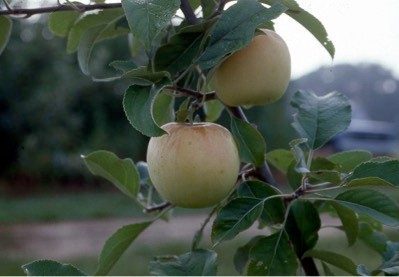This content is for informational purposes only and does not constitute financial, legal, or professional advice. Always consult a certified professional before making financial or investment decisions. As an affiliate, we may earn a commission from qualifying purchases made through links in this post at no extra cost to you.
Storing apples in sand is a time-honored tradition that allows us to enjoy their delightful flavors long after the harvest season ends. While there are various methods of preserving apples, one particularly effective technique is storing apples in sand. This method, rooted in centuries of wisdom, offers a simple yet efficient way to extend the shelf life of these crisp and juicy fruits.
Apples, with their crispness and sweetness, are a beloved fruit enjoyed by many. To prolong the pleasure of apple consumption beyond their harvest season, various preservation techniques have been developed. One such method, rooted in centuries of wisdom, is storing apples in sand.
This technique offers a simple yet effective way to extend the shelf life of apples by providing insulation and maintaining optimal moisture levels. In this article, I will explore the steps involved in storing apples in sand and discover the benefits of this time-tested preservation method.

10 Easy and Effective Success Steps of Storing Apples in Sand
Storing apples in sand is a tried-and-true method for prolonging their shelf life and enjoying their delectable flavors throughout the year. By carefully selecting the sand, layering the apples and sand, and storing them in optimal conditions, we can preserve the freshness and quality of these delightful fruits.
The art of storing apples in sand is a testament to our ingenuity in preserving nature’s bounty and relishing its sweetness, reminding us of the timeless traditions that connect us to the harvest and the seasons. Below are 10 easy steps for success
Step – 1: Selecting the Right Sand:
To begin, it is crucial to choose the appropriate type of sand. Opt for clean, dry, and fine-grained sand, avoiding any sand that may contain impurities or excess moisture. Beach sand is not suitable for this purpose, as it often contains salt and moisture that could adversely affect the apples’ quality.
Step – 2: Preparing the Container:
Next, prepare a suitable container for storing the apples. It is essential to select a sturdy container that provides adequate ventilation. This will prevent the apples from becoming too humid or suffocating, ensuring optimal storage conditions. The container should be spacious enough to accommodate the desired quantity of apples without overcrowding.
Step – 3: Layering the Sand:
Begin the process by pouring a layer of sand at the bottom of the container. The depth of this layer should be approximately 1 to 2 inches (2.5 to 5 cm). The sand acts as an insulator, protecting the apples from extreme temperature fluctuations while also maintaining optimal moisture levels.
Step – 4: Placing the Apples:
Carefully arrange a single layer of apples on top of the sand layer. It is crucial to ensure that the apples do not touch each other, as this can lead to bruising or facilitate the spread of rot if one apple spoils. Creating ample space between each apple is essential for optimal storage.
Step – 5: Covering with Sand:
Once the layer of apples is arranged, gently pour sand over them, ensuring they are completely covered. The sand layer should be thick enough to fully envelop the apples, creating a protective barrier against external elements. This covering of sand helps maintain a consistent temperature, prevents moisture loss, and inhibits the growth of mold or bacteria.
Step – 6: Repeating the Layering Process:
Continue the layering process by adding subsequent layers of apples and sand until the container is filled, leaving a small gap at the top. Each layer of apples should be followed by a layer of sand, ensuring every apple is separated and covered uniformly. This layering technique helps maintain the apples’ individuality and prevents the spread of spoilage.
Step – 7: Storing in Ideal Conditions:
Once the container is filled, move it to a cool, dark location, such as a root cellar, basement, or cool pantry. Apples store best at temperatures between 32 to 40°F (0 to 4°C). It is essential to ensure that the storage area has adequate air circulation to prevent the buildup of ethylene gas, which can hasten the ripening process.
Step – 8: Regular Inspection:
Regularly inspect the stored apples for any signs of rotting or decay. Remove any spoiled apples immediately to prevent the spread of spoilage to the remaining fruits. By promptly identifying and eliminating compromised apples, you can preserve the overall quality of the stored batch.
Step – 9: Maintaining Humidity:
Apples require a certain level of humidity to prevent dehydration. Regularly check the sand to ensure it remains slightly damp but not wet. If the sand feels dry, lightly mist it with water to maintain the desired humidity levels. This step helps preserve the apples’ crispness and juiciness throughout the storage period.
Step – 10: Rotating and Enjoying the Apples:
Over time, apples naturally release ethylene gas, a ripening hormone. As some apples ripen, it is essential to check the stored batch periodically. Consume or use the ripe apples and replace them with fresh ones to maintain a rotation, ensuring a constant supply of apples throughout the storage period. This allows you to savor the deliciousness of apples long after the harvest season has ended.

Benefits of This Time-tested Apple Sand Preservation Method
The time-tested apple sand preservation method offers several benefits that contribute to the prolonged shelf life and quality of the stored apples. Here are some key advantages:
Extended Shelf Life:
Storing apples in sand helps extend their shelf life compared to conventional storage methods. The sand acts as a natural insulator, protecting the apples from temperature fluctuations and slowing down the ripening process. This allows you to enjoy fresh, crisp apples for an extended period.
Preservation of Flavor and Texture:
The insulation provided by the sand helps maintain the flavor, texture, and juiciness of the apples. By creating a stable environment with controlled humidity levels, the apples retain their natural sweetness and crunchiness, providing a delightful eating experience.
Protection Against Moisture Loss:
Apples naturally lose moisture over time, which can lead to shriveling and loss of quality. Storing them in sand helps minimize moisture loss by creating a slightly humid environment. This ensures that the apples remain plump and juicy throughout the storage period.
Prevention of Mold and Decay:
Sand acts as a physical barrier, protecting the apples from direct contact with each other and reducing the risk of mold and decay. The sand layer inhibits the growth of microorganisms, providing a clean and hygienic storage environment for the apples.
Cost-Effective and Environmentally Friendly:
The apple sand preservation method is a cost-effective solution for storing apples, as it does not require specialized equipment or expensive materials. Additionally, it is an environmentally friendly approach that avoids the use of synthetic chemicals or excessive packaging.
Retention of Nutritional Value:
Apples are packed with essential nutrients, vitamins, and dietary fiber. By preserving them in sand, the nutritional value of the apples is better maintained compared to long-term storage methods that may involve exposure to artificial ripening agents or prolonged refrigeration.
Easy Accessibility and Rotation:
Storing apples in sand allows for easy accessibility and rotation. You can conveniently access the stored apples as needed, removing ripe ones for immediate consumption while replacing them with fresh apples. This rotation ensures a continuous supply of quality fruit.
Traditional and Time-Tested Method:
The practice of storing apples in sand has been used for generations, standing as a testament to its effectiveness. It carries the wisdom of past generations and connects us to traditional preservation techniques that have proven their value over time.
This time-tested apple sand preservation method offers numerous benefits. By utilizing this method, you can enjoy the deliciousness of apples long after their harvest season has ended.
If You Love This Article Then Help Fruit Gardener By Purchasing On Amazon By Using This Link.
Click Here For Amazon Home Page
Most Related Article You Should Read –
-
How to Store Apples Long Term – 7 Effective Ways To Store Apples
-
How to Store Apples Without Refrigeration – 5 Effective Methods
-
8 Simple Steps of Storing Apples In Cardboard Boxes
-
How Can You Store Apples In A Root Cellar – 9 Easy Steps
-
9 Easy Steps of How to Store Apples in Fridge For Long Term
-
Do Apples Go Bad In The Fridge – 4 Factors that Affect the Freshness of Apples
-
How to Store Apples in a Barrel – 9 Essential Steps For Long Term Preserving
Frequently Asked Questions
Q: Why should I store apples in the sand?
A: Storing apples in sand helps extend their shelf life by providing insulation, maintaining optimal moisture levels, and protecting them from temperature fluctuations.
Q: What type of sand should I use for storing apples?
A: Choose clean, dry, and fine-grained sand. Avoid using beach sand or sand with impurities or excessive moisture.
Q: Can I wash the apples before storing them in sand?
A: It’s generally recommended to avoid washing apples before storage to prevent excess moisture. However, you can gently wipe off visible dirt or debris.
Q: How deep should the sand layer be?
A: The sand layer at the bottom of the container should be around 1 to 2 inches (2.5 to 5 cm) deep.
Q: Should the apples touch each other when stored in the sand?
A: No, it’s important to arrange the apples so that they do not touch each other. This helps prevent bruising and the spread of rot if one apple spoils.
Q: How thick should the sand layer be when covering the apples?
A: The sand layer should be thick enough to fully cover the apples, providing insulation and protection. Aim for a uniform coverage over the entire surface.
Q: Can I store different apple varieties together in the same container with sand?
A: It’s generally recommended to store apple varieties separately, as they may have different ripening rates. This prevents overripe apples from affecting the quality of others.
Q: How long can apples be stored in the sand?
A: Apples can be stored in sand for several months, depending on the variety and condition of the apples. Regularly inspect them for any signs of spoilage.
Q: What is the ideal storage temperature for apples in the sand?
A: The ideal temperature range for storing apples in sand is around 32 to 40°F (0 to 4°C). This cool temperature helps slow down the ripening process.
Q: How do I maintain humidity when storing apples in sand?
A: To maintain humidity, check the sand regularly. If it feels dry, lightly mist it with water to keep a slightly damp environment around the apples. Be cautious not to make the sand too wet, as it can promote rotting.
My Opinion
Storing apples in sand is a traditional and effective method of preserving their freshness and extending their shelf life. By carefully following the steps outlined above, you can create a cool and insulated environment that helps maintain the apples’ quality and flavor. Embrace the art of storing apples in sand, and relish the taste of this delightful fruit long after its harvest season has passed.


